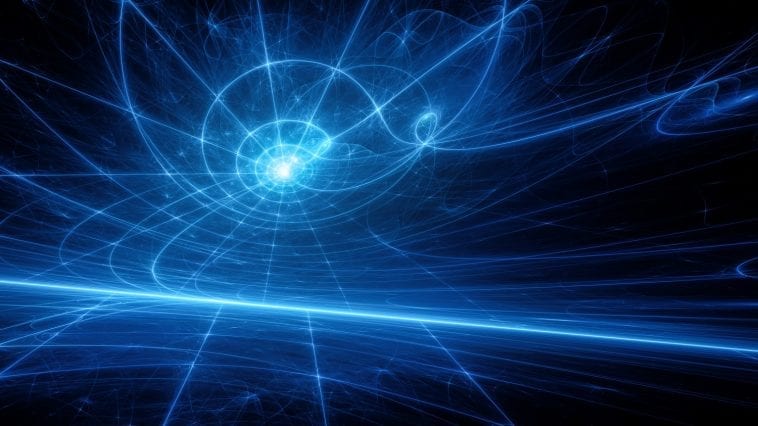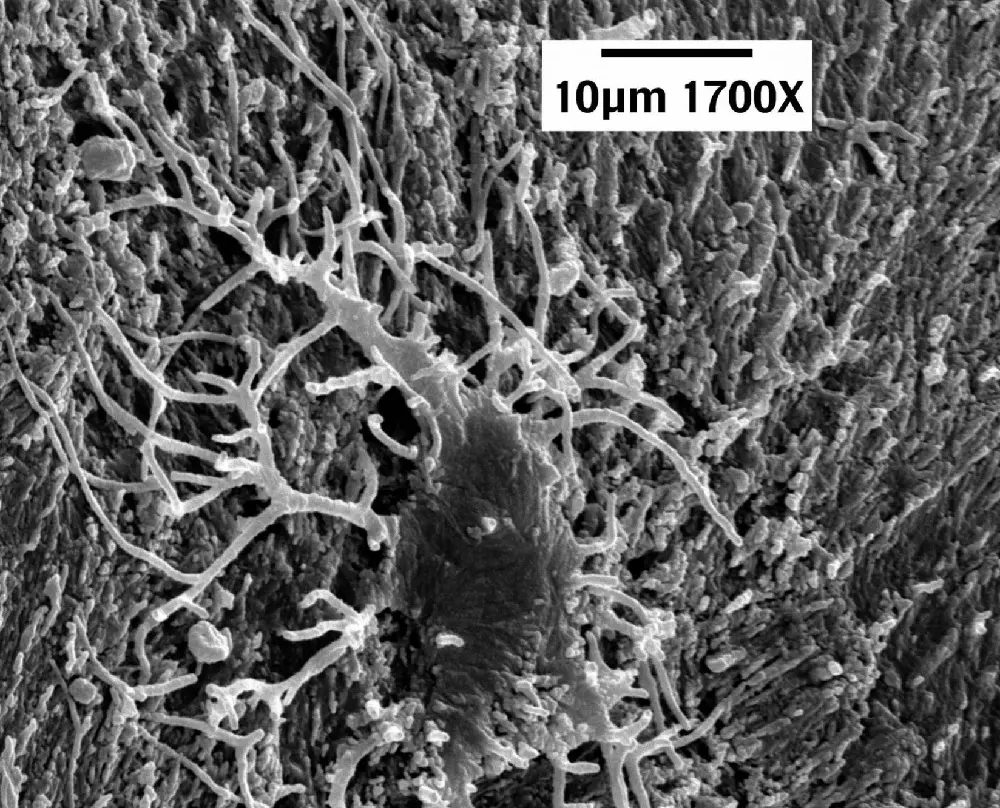[Originally published as part of Quantum Mechanics’ Wave-Particle Duality is a Triality.
Part one HERE]
Consider a hypothesis that is consistent with, well, just about everything, and that if true would help to answer many questions.
Rather than a wave-particle duality, matter is a wave-particle-word triality, with “word” meaning information or, perhaps better, functional information.
Quantum states are probabilistic and probability is conceptual, not physical. This may explain why, after a century of trying, currently there is no explanation for how a wave can physically collapse into a particle. No such explanation may exist.
A survey of quantum physics instructors found that 30% “thought of the wave function as a physical matter wave, while nearly half preferred to view the wave function as containing information only…” ~APS Physics
A photon, like every other elementary particle, is primarily a functional information packet expressing itself, based on context and the rules of physical grammar, so to speak, as a particle or as a wave. Indeed, experiments suggest that a photon can even exhibit aspects of both particle and wave expression simultaneously.
In quantum mechanics, a particle’s probability is not based on a lack of information, as with a classical shell game with its one-third probability that the ball is under a particular cup. The probabilistic quantum state does not refer to a lack of knowledge about the state but to the state itself.
Further, every particle, regardless of its state, is an expression of a quantum packet of information. So one consequence of the wave-particle-word triality hypothesis is that every particle is always in a quantum state.
- Of proton (and quark) manufacturing, so to speak, why are the tolerances exact?
- Why can’t some protons (or their quarks), with a mass of more than 1,800 electrons, perhaps have only 99.7% or 100.1% of the inverse charge of an electron?
- Why are all fundamental particles, even long after the Fall, apparently exactly identical to all others of the same kind?
Elementary particles of the same kind are identical to one another because each is the expression of a mathematical and linguistic information packet, which packets are the essence of matter. A bottom quark is identical to all other bottom quarks in the way that the number 3 is exact and identical regardless of how many times it is expressed.
Though it obeys a grammar and is fundamentally information, neither a particle nor a wave is an illusion. They are not non-physical in the sense that they only exist in one’s perception.
The wave does not occupy any abstract higher-dimensional Hilbert space.¹ Instead, both the particle and the wave are actual expressions of the quantum information packet. (Should that be called a quip?)
- Why would a particle heading toward two slits transform itself into a wave?
- Why must a subject and verb agree in number?
- Why must the spin of a far-distant entangled particle equal zero with its entangled twin?
- Why, grammatically, is a singular subject typically paired with a plural verb when in a counterfactual subjunctive mood?
These are the rules of language, human language, and the language (punctuation—syntax even—grammar, and composition) of physics. In both, context determines which expressions are appropriate.
Physicalizing the Immaterial
If we can’t conceive of a particle going through two slits simultaneously, we also cannot conceive of any way that such a problem could challenge a non-physical entity. Information is not physical. It exists and flows in a non-physical dimension that is interfaced with our physical universe.
Information can be generated by a man’s spirit, which spirit itself is interfaced to his body. In some similarly bewildering manner, quantum information is interfaced to our physical cosmos.
So, not aware of that functional information nor its role, in one camp the Copenhagen interpreters say “shut up and measure,” arguing against even trying to understand. And another broad camp visualizes, in the place where the quip interfaces to the physical realm, either a multiverse or multiple non-existent physical dimensions—all because they are unwittingly trying to physicalize something that cannot be physicalized.
Not Just “What”
When Newton described universal gravitation, he gave little thought to the how of its mechanism, satisfying himself with describing what it does. Mankind has benefited ever since.
Quantum physicists describe in precise detail what electrons do when, for example, they jump to a ground state energy level, but not what causes this, that is, why do they do this.
Some claim the electromagnetic interaction by the Coulomb force from the positively charged protons in the nucleus produces this jump by interacting with the negatively charged electron.
Other highly qualified scientists give a general explanation without identifying a specific cause, such that, everything seeks its minimal energy ground state.
Many physicists explain that the move to ground state results from the zero-point energy of the quantum electrodynamic vacuum.
However for ZPE itself modern physics lacks a full theoretical model, with a current order of magnitude between theory and observation at 1 in 10120, the so-called vacuum catastrophe, or cosmological constant problem.
So giving an actual detailed physical cause for something as ubiquitous as electrons moving to ground state is currently troublesome.
Likewise, we know the electric charge of a proton. But why is it so? And why does it exactly match the inverse charge of the electron?
Maxwell’s field equations² addressed waves of electromagnetism a half-century before Einstein spoke of individual quanta. So with the single photon’s invariant zero mass, we know that its velocity upon creation is light speed.
But why is it that speed?
Though building upon Maxwell’s insights, Einstein put a wrench into them. As it was put by an astrophysicist at the State University of New York, light speed is what it is because of the fine structure constant, which means, “we don’t know.”
Explaining the Impossible Reality
Following Newton’s approach, if matter is a wave-particle-word triality, then recognizing this must be important for furthering our general understanding, including our comprehension of what matter is even doing, and this triality may give us insight into the why, even if we have no conception of the how.
For example, the triality insight supports the view of many that the wave function is best viewed as purely mathematical, for by its triality, matter’s quantum packet of functional information would include those mathematics.
And this triality may help us better understand what could be called the quantum conservation of weirdness.
The reason, then, that different particles can be in superposition (which shocked the world of physics until they merely got used to it) is the same reason why a single particle can be in many locations simultaneously, and that is because, not being “physical”, there is no conceivable objection to mathematical values superimposing upon one another nor to mathematical expressions being in many locations at the same time.
For the information packet containing those expressions also contains the grammatical rules to discern the proper contexts of such behavior. And a quantum state can be split because division is a valid operation on its mathematical expression.
Particles can tunnel because experiment has shown that the rules of quantum syntax and grammar permit a flow of information such that physical barriers cannot prevent it. For tunneling to manifest frequently, these rules require such barriers to be tiny.
God thought E=mc2 and implemented it along with many other beautiful mathematical equations in His creation.
That equality, along with many such functional requirements and design considerations, led our inexhaustibly creative God to implement the quantum world with the capabilities it has. This provides a robust foundation for the macro world. And it also makes available these astounding microscopic capabilities to achieve otherwise impossible precision (as in navigation and smell) in biological organisms and for creative human inventors to exploit including by enabling information technology that could blur the distinction between easy and hard computational problems.
Footnotes
- 2016, The Quantum Handshake: Entanglement, Nonlocality and Transactions, John G. Cramer, Springer, p. 71; 2006, Cramer’s transactional interpretation and causal loop problems, Synthese, Vo. 150, pp. 1-40
- Why is the speed of light what it is? Maxwell equations visualized, 13 minute YouTube video







